
|
|
|
|
Message from Smithers, British Columbia
http://www.wildlifeshelter.com

|
Smithers, B.C.Smithers is a town of 5,000 people, located in the northern British Columbia between Prince Rupert and Prince George along Hwy 16. Many visitors come to this town for camping, hiking or fishing in the summer, and skiing in the winter. Air Canada Jazz takes you there in about 2 hours from Vancouver. |
(August, 2007)
This Shelter is operated and managed by Angelika and Peter Langen. On the day of our visit, the residences of this shelter are
A Grizzly Bear,
5 Moose,
An Australian Owl,
A Grey Owl,
A Cougar,
Many Squirrels and Guinea Pigs,
and more.
* Most of the rescued animals are not to be viewed by the public. They are in the process of rehabilitation to be released back to the wilderness, so it's not a good idea for these animals to get used to being with people.
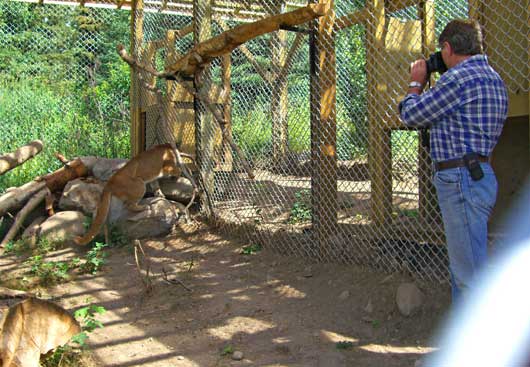
Helena was constantly moving around at thie time, but Peter took some good photos for me.
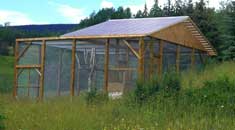
The facility for the Cougar costs 35,000 dollars. |
The operation of this shelterThe shelter opened 15 years ago. Up to this time, 120 Black bears and 50 Moose and Deer have been rescued, healed and released back to the wilderness. Even though the government gave Peter and Angelika permission to operate this shelter, it is not supported financially by the government. Most of the operation is managed by Angelika and Peter themselves, and supported by donation from the public. |
The Difficulty of Releasing Animals back into the WildernessSince the Black Bear and the Grizzly Bear are considered to be Predators, the government is opposed to the rehabilitation and uncontrolled release of the animals back into the wilderness. With increased public awareness, however, the government now recognises this program as a worthwhile pilot program. But there are many factors to be considered:
Because of the activities of the Logging Industry, the size of the Bears' forest habitat is now becoming much smaller. This last issue is directly connected to our daily lives. |
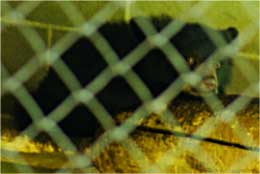
So shy, nervously finding out what's going on. 
Anxiously staring at me |
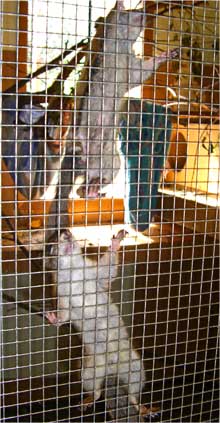
The rescued baby squirrels have to be fed every 2 or 3 hours. 
Baby Moose - she was little bit shy. |

Cautiously coming closer to find out who the visitors are. Slowly coming closer. The NOW and THEN of the rescued animals
|
|
The BC Government basically objects to the concept of rehabilitation and release of predatory animals. The main reason is the question of who would bear responsibility if the released animal were to injure domestic livestock or humans. Peter still believes that it is possible for all humans and animals to share the planet Earth peacefully. For example, the protection of the bears' habitat is very important. Although bears have a poor image of being dangerous to humans, 90% of the incidences with bears have a human cause, such as the improper handling of garbage. Peter is not totally opposed to Urban Development, but he thinks that we should know more about animal behaviour in the wilderness. Then we can assess the impact that our expansion into their world will have on them before and after we begin. "We cannot just go cutting down trees and destroying the forest for our own economic benefit. Risking the lives of the animals without consideration is not the answer." The more we learn about animals, the closer we will get to the ideal of the co-existence of Man and Nature. This goal will lead to an improvement of the enjoyment of our lives in the future. The goal is to reach a balance between Human Life and Nature. Since animals cannot talk to us, we may have to take the initiative in understanding the nature of the stress that we cause them. Not all animals react to Human presence in the same way. Some can adapt better than others although this takes time. Have you noticed some species of owls living among the urban environment? 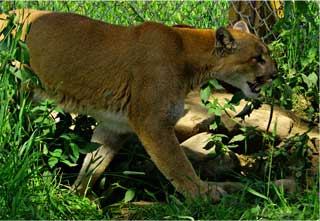
Helena was nervous because of the new visitors. |
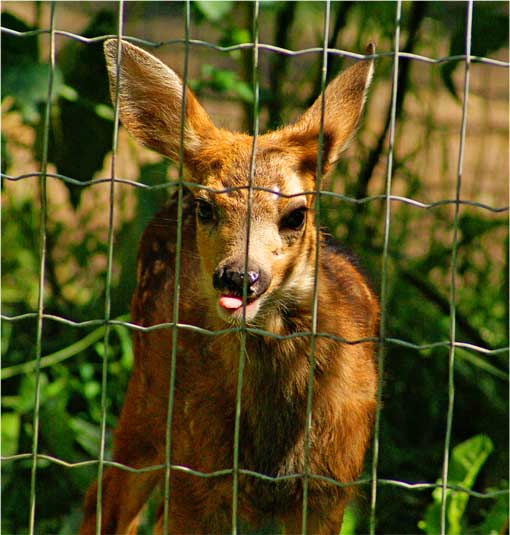
Baby Deer very curiously came closer to see us. |
|
Angelika and Peter present their knowledge and experience to the International Bear Conference and to the International Moose Conference. Most of the time, Angelika is the spokesperson for the presentation of information to the press. |

Electrical wire is used to scare off wild bears in order to protect the Deer and Moose. |
and more....One snowy winter day Peter was on the site taking care of the animals in the shelter, when suddenly a large wild Moose appeared and knocked Peter down. He could not move for a long while or call for help and unfortunately all the family members were away from the shelter that day. But then just in time, Missy the Moose from Peter's shelter saved the day when she came and pushed away the wild Moose who was about to kill Peter. Angelika and Peter have had a lot of experience as zoo keepers. They have been dedicated to the care of many animals, especially large mammals such as bears. Although the released bears remember Peter at first, after the hibernation season, they seem to forget him. |

Mr. Peter Langen, who helped me understand about the animal rescue and rehabiltation that day. |
|
Donations Please!!
This shelter is supported by people like yourself. Please check out the Web page site of Northern Lights Wildlife Society (http://www.wildlifeshelter.com), or contact Jack the Lizard by E-mail at jack@animal-dino.com. |

Winter Food have to be prepared during the summer. |